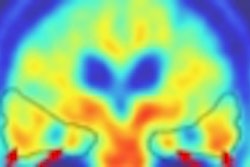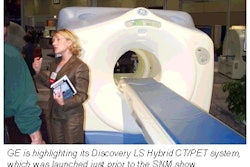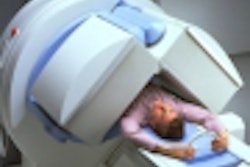Longtime nuclear medicine pioneer ADAC is attending its first Society of Nuclear Medicine meeting this week since being acquired late last year by Philips Medical Systems. The Milpitas, CA-based vendor is highlighting its progress in developing a hybrid CT/PET system, a new dedicated PET camera, and a SPECT camera with a decidedly different design.
Although there have been questions about how independent and entrepreneurial ADAC will remain under the aegis of the Netherlands-based multimodality vendor, the company has reassured some industry watchers by retaining key executives who were running ADAC at the time of the acquisition. CEO Gary Burbach remains at the helm of the company, while longtime executive Jeff Nelson runs the vendor's nuclear unit.
Just like the relationship between the two companies, the work-in-progress Gemini hybrid CT/PET system has undergone more development since it was first shown as a mockup at the 2000 RSNA meeting in Chicago. Designed and assembled by integrating ADAC’s PET technology with a Philips single-slice spiral CT scanner, Gemini fuses functional and anatomic images for surgical and radiation therapy treatment planning in oncology.
While it might seem that Gemini’s most obvious attribute is the fusing of ADAC’s PET technology with Philips’ CT acumen, ADAC’s marketing director Josh Gurewitz calls Gemini another example of the blurring of the line between imaging modalities.
The Milpitas, CA-based company has around 40% of the North American dual-head camera market, according to Gurewitz, and in the past quarter up to 60% of the nuclear cardiology market. There has been speculation about whether ADAC would maintain its identity, and Gurewitz said the ADAC name would remain intact for the short-term.
Gurewitz said customer response to the acquisition has been extremely positive, and there are great opportunities for synergies with Philips products and with those of another recent Philips acquisition, Agilent Healthcare Solutions Group. "ADAC is already the market-share leader in North America," Gurewitz said. "Now with Philips, we have access to infrastructure and new distribution channels previously not available."
ADAC is making the commercial introduction of the Skylight gamma camera at the SNM meeting in Toronto. Skylight has a gantry-free design that mounts directly to the room structure, eliminating restrictions associated with floor-mounted gantry-based systems. This enables better patient access and more flexible patient positioning.
Another of ADAC's new product introductions is Allegro, a gadolinium oxyorthosilicate (GSO)-based dedicated PET camera. This next-generation system will offer improved image quality and faster imaging time. ADAC says Allegro has significantly higher performance and greater patient throughput than ADAC's current PET offering, CPET Plus, which is an entry-level dedicated PET camera based on sodium iodide crystals.
By combining advanced electronics, sophisticated positioning algorithms, and a new scintillator, ADAC says that Allegro achieves a level of PET performance suitable for research applications as well as the high throughput and clinical demands of a busy department.
By Robert BruceAuntMinnie.com contributing writer
June 26, 2001
Related Reading
ADAC releases IMRT software, June 14, 2001
ADAC promotes Burbach to CEO, April 5, 2001
ADAC appoints Nelson as GM, March 1, 2001
Philips to re-enter nuclear medicine market with bid to buy ADAC, November 13, 2000
Click here to post your comments about this story. Please include the headline of the article in your message.
Copyright © 2001 AuntMinnie.com



















